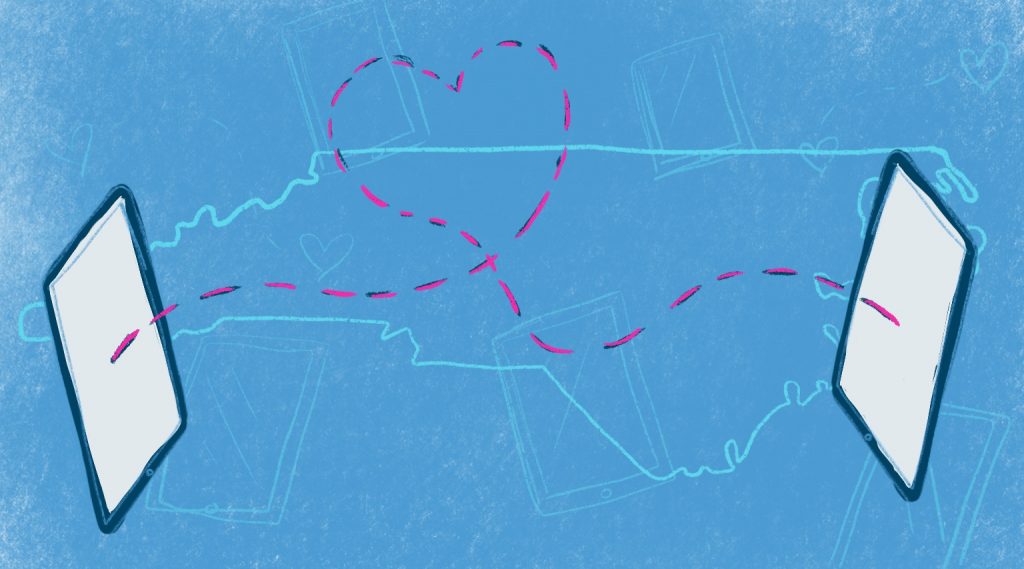
By Bobby Hundley, UNC Health Foundation
As officials across the UNC Health system began mobilizing to confront a potential outbreak of the novel coronavirus in late February and early March, one of the earliest changes to system policy was a reduction of visitors to hospitals and clinics. The severity of the COVID-19 threat meant that patients would soon be facing hospitalization without the comfort of loved ones by their side.
This new challenge was quickly met with ideas for a new solution and a new way to provide compassionate care for patients and their families.
Suzanne Herman, UNC Health’s System Executive Director for Patient Experience, and her patient experience colleagues across the state under the leadership of Chief Nurse Executive Cathy Madigan began to see a need right away. Fewer visitors meant more patients in the untenable position of being isolated while fighting severe illnesses.
“We quickly realized that, as a system group, we needed to promote a way that could allow patients and families to communicate virtually,” Herman said. “And as we were preparing for a surge of COVID-19 patients, we were trying to search for a solution to leverage some of our technology assets to allow staff be able to facilitate a virtual interaction with loved ones.”
Collaboration Creates A Solution
System Program Manager Kelly Wilson along with Herman and others on the Patient Experience team went about seeking solutions to this growing need. With many patients either not having their own phones or tablets or being too sick to use them, Wilson and Herman began to consider ways to fill the gap.
“There were a lot of people realizing they had this similar need,” Wilson said. “Our role was to utilize the devices we knew about and bring in all these areas of work being done and figure out where they were most needed.”
That realization led them to Dee Young, UNC Health’s System Chief Information Security Officer who had just weeks earlier come to North Carolina from San Antonio.
“(Dee) became very passionate about this project, understanding that this was a need and that we needed to get this done and done quickly,” Herman said.
Young and her team of senior information security analysts David Harper, Cari Daniels and Allen Jones, working under the leadership of system CIO Tracy Parham, took up the challenge of sourcing devices and deploying them to caregivers in a way that would be safe and secure from both an infection control and cybersecurity standpoint. By creating a repeatable workflow, they have been able to provide guidance for ITS staff across the UNC Health system.
Programs have now been developed and are being mobilized across the system that put staff in place to facilitate these calls for patients. UNC Health patient experience leaders such as Tracy Carroll and Shane Rogers at the UNC Medical Center and Deb Stargardt at UNC REX have deployed teams to focus on rounding on patients to help facilitate virtual visits with loved ones.
Providing A Lifeline
Dr. Laura Hanson and her staff work with patients who are especially vulnerable to the adverse effects of pandemic isolation. As a professor of geriatric medicine and the Medical Director of the UNC Palliative Care Program, Hanson is keenly aware of the impact losing contact with loved ones can have on both patients and caregivers.
“The way that we first got started in seeking access to iPads and other tablets was the moral distress of our ICU nurses and physicians,” Hanson said. “Very seasoned people almost crying in our communications saying ‘This can’t go on, this level of suffering for the patients and families being separated is something we have to find a way to overcome.’”
While helping sick patients manage pain and suffering is common for Dr. Hanson and her palliative care staff, this unprecedented challenge of isolation and separation posed a new threat.
“None of us have experienced this in our medical and nursing careers. We’ve always known that families and patients can be together in the most difficult of times with rare exceptions. To have it be a universal situation that they have to be separated has caused tremendous moral distress.”
That understanding made facilitating virtual connections vitally important. And the impact was almost immediate. Ellen Ozier, one of two licensed clinical social workers on the in-patient palliative care team, has seen that impact first hand.
“Being able to introduce iPads and FaceTime communication with families has improved our ability to care for patients and families immensely,” Ozier said. “For families to be able to see their loved ones, it is reassuring to them that they are being cared for. Even if the patient can’t communicate back to them, being able to tell them that they love them, offer words of encouragement, goes a long way.”
In many ways, the communication is just as important for family and friends as it is for the patient.
“I have heard over and over from family members how truly meaningful it is for them to be able to communicate with their loved ones and even to see progress,” Ozier said.
Similar Needs Across The System
Meredith Peters, a patient advocate at Wayne UNC Health Care in Goldsboro, has been serving her community for nearly a quarter century. And just as her colleagues in the Triangle saw an emerging need in the face of pandemic isolation, so too did Peters.
“At the very beginning we saw that we had to find a way for our patients to be able to talk to their families and see their families,” Peters said. “Even if patients were intubated, they needed to be able to see their family members and have that connection that’s so important.”
With an older patient base and a steady influx of COVID-19 patients due to an outbreak at the nearby Neuse Correctional Institution, Peters knew that many of her patients would be unable to get that connection without help. In a short time, the ability to create these virtual interactions has become a beacon of hope for patients and caregivers alike.
“I know it’s had a positive impact on our nurses,” Peters said. “They have me scheduled to come talk with patients. They know it’s having a positive impact on the patients – boosting their spirits, helping their recovery. It’s been good for our doctors as well. They’ve been able to talk to family members and get that face-to-face connection. I see it as something that we will definitely continue to use after the pandemic is over.”
A Chance To Celebrate Life
Another key group impacted by virtual communication has been the patients at the SECU Jim and Betsy Bryan Hospice Home near Pittsboro. For people facing difficult end-of-life decisions, FaceTime conversations with friends, family and spiritual leaders has been critical. And for some, this new method of communication has created new opportunities to celebrate a life well-lived.
“When someone is actually at the end of life and knows that their time is short, there are many people who want to visit,” Dr. Hanson said. “We have several of the tablets at the hospice in-patient unit and it’s been an incredible joy to watch the facilitation of dozens and dozens of people visiting somebody who is approaching the end of life. These friends and loved ones are not able to travel but are able to visit using this technology, and that’s been a real blessing.”
“A lot of people tell us that there are many people that they want to say goodbye to, that they want to have final words with when they know that the end is near. They are typically only able to do that with a few close family members, and this has really made it possible to do that with many more people.”
Creating Opportunities For The Future
While this collaboration and innovation was sparked by the exceptional circumstances of the pandemic, the importance will continue after the threat of COVID-19 has passed. And while managing the outbreak has been a top priority for months now, it’s critical to remember that the separation required impacts all patients. That, Dr. Hanson says, can help make this a lasting impact.
“We did sometimes see situations, pre-COVID, when patients and families couldn’t be together. An example might be an older couple where the spouse is unable to drive to the hospital or a child is serving in the military overseas and is unable to get back and visit in the hospital. And while we’ve routinely facilitated telephone conversations for those circumstances, I’m deeply hopeful that we will continue to use these video connections in the future.
“One of the things that COVID has taught us is to be creative in communication.”
For more information about the UNC Health Foundation COVID-19 Response Fund, click here.

3 Responses to “Virtual Connections: Keeping Patients And Loved Ones Together In A Pandemic”
Kathleen Garner
I know from first hand experience that this endeavor was worth every moment of collaboration time and every dollar spent to deploy this solution!
My 81 yr old father suffered from Covid-19 a few weeks after hip replacement surgery. He was extremely ill with a very poor prognosis and he was isolated in ICU. As a family we were worried about many things but the worst was feeling he would die alone. It was devastating to all of us. When I got the call asking if we wanted to see him via FaceTime it was a life changer for us all. We made arrangements and the deal was done. EVERY day @ 3pm the nurse would call me and wait while I would patch my 3 sisters in for a group call to see Dad. At first, he could not respond or even show signs that he heard us but we kept giving encouragement and love. We lived for that 3pm call. We know now, the calls helped all of us deal with one of the most frightening experiences together and it was a huge part of the reason we all healed. Dad is home now working with Physical Therapy to recover from the ravages Corona leaves behind but is improving everyday! He often talks about how much hearing us encourage him to fight every day helped him to not give up. It really shows that connections to your loved ones are just as important to survival as the medical interventions for the disease. THANK YOU!!!!!!!!!!!!!!
Sara Malone
New ways to use video connections is keeping everyone who is isolated at home connected during this challenging time. I hope that UNC Health will continue to use the video connection program to help keep patients connected with often widely dispersed family members, and not just for end of life situations or during the pandemic. Just as virtual medical visits are helping providers and patients stay connected, virtual family visits may solve problems for young children who want to see a parent who is in the hospital (or vice versa) for non COVID-19 reasons now and in the future. Thanks for sharing this story of creative problem solving.
sydney jenkins
Wonderful! I live in Chapel Hill and my mother’s nursing facility in Gastonia, NC has been doing Facetime calls with her and me during this time and it has been such a lovely thing! It’s the only way we can get together since I can’t go visit her. I’m so happy you are doing it there!